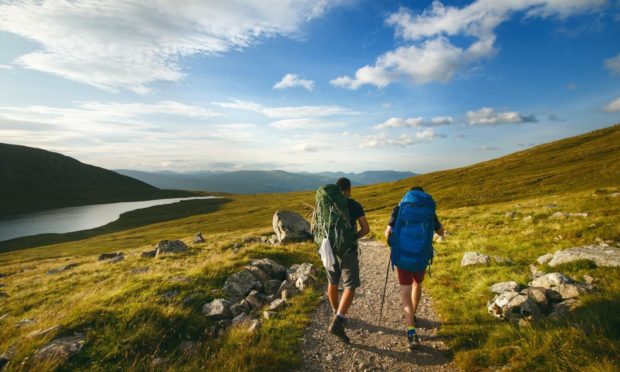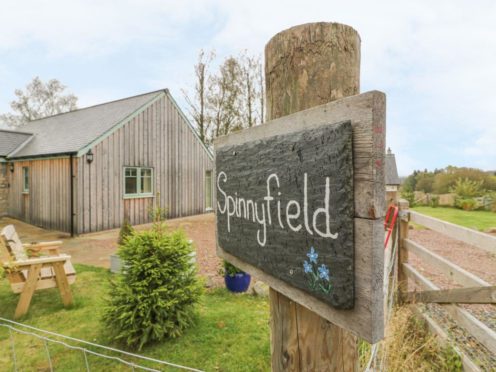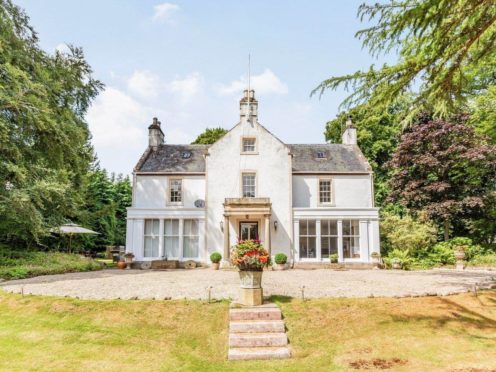Aberdeenshire and the Highlands and Islands are in the top most-profitable places in Scotland to own a holiday home, a new report has revealed.
The recent survey shows that demand for holidays in Scotland has hit an all-time high this year, with over 76% of Scots holidaying at home and a third of Brits planning to visit.
The Scotland Staycation Index 2021 from Sykes Holiday Cottages highlights a 92% occupancy rate for its Scottish holiday lets this summer, and a 65% increase in enquiries from second homeowners and investors looking to get into holiday letting.
The Staycation Index analysed Sykes Holiday Cottages’ booking figures, consumer research and revenue data to reveal all about Scottish staycations, while also showing the numbers turning to holiday letting as an investment.
The research reveals the highest-earning regions for holiday letting in Scotland, with the Highlands and Islands, Perth and Kinross and Aberdeenshire commanding the most rental costs.
In fact, holiday-let owners in Scotland can expect to earn an average income of £16,000.
Interest in second home investment
However, earlier this year the Scottish Government announced it was considering potential restrictions on second-home ownership in Scottish tourism hotspots to free up housing stock for younger home owners and locals, and to create more affordable homes.
Already 25 of Scotland’s 32 councils have removed the 10% council tax discount on second homes in an attempt to discourage second-home buyers. In Scotland’s tourism hotspots, Highland Council, Moray Council, Aberdeen City Council and Aberdeenshire councils all charge 100% council tax on second homes.
Second-home buyers also face having to pay a dwelling supplement of 4% on top of the Land and Buildings Transaction Tax on the purchase price.
Second homes tax
Also worth bearing in mind are new tax changes that affect the sale of second homes and rental properties by UK residents. New investors, and those who are selling on their holiday homes to investors, are now liable to pay capital gains tax (CTG) within 30 days of selling their second home.
Tax planning specialist and director of accountancy firm Douglas Home & Company Sheryl Macaulay said: “The property market is buoyant at the precise time that many investors are thinking of selling up. Meanwhile, they are exactly the people who are going to be hit by the time pressure to report capital gain.”
Busiest summer on record for Scots holiday-let owners
However, the prospect of additional costs and fast CGT turnaround does not appear to have deterred would-be buyers who are likely to recoup the council tax costs in rentals. In fact, holiday-let owners in certain areas of the country can expect more than double the return of investment compared to buy-to-let properties.
With foreign travel restrictions still subject to change, Sykes’ Index highlights a 22% uplift in Scotland holiday let bookings for this summer compared to 2019, and a 46% increase for autumn and winter.
Plus, a quarter (24%) of Scots say the pandemic has made them more likely to consider holiday letting as a means of providing extra income at some point in the future.
High demand for luxury stays
For those weighing up where to invest, the Highlands and Islands is the most lucrative destination, with an average revenue of almost £19,000 for a three-bedroom property annually. It is also the most popular region for travel in Scotland in 2021, according to Sykes’ booking data.
Perth and Kinross and Aberdeenshire follow closely behind as top-earning regions, with both also featuring in the list of popular destinations for bookings this summer.
The analysis compared owners’ rental income with Scottish Government rental figures, along with house price data from Home.co.uk, to reveal the areas with the strongest return of investment (ROI) in Scotland.
A stronger staycation market in Scotland will likely remain a fixture for years to come
Graham Donoghue, CEO, Sykes Holiday Cottages, said, “As a proud Scot myself, it’s easy to see why Scotland is a firm favourite amongst holidaymakers.
“And with the appetite for staycations in Scotland reaching new heights, our holiday let owners are generating more revenue than ever before. The growing attractiveness of this investment opportunity is also fuelling more and more new owner enquiries for properties based in Scotland by the day.”
Back-to-back bookings
Susan Hunt, owner of a two-bedroom holiday home in the Highlands, said: “It’s obviously been a challenging year for the entire travel industry, but we can’t believe just how much bookings have bounced back. This year is set to be one of our busiest yet, with back-to-back bookings over summer and 2022 bookings already rolling in.”


